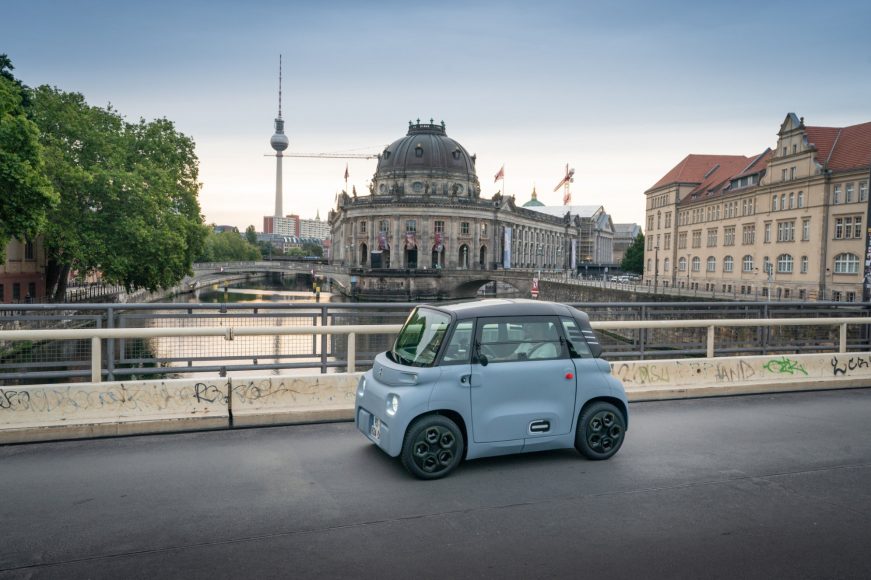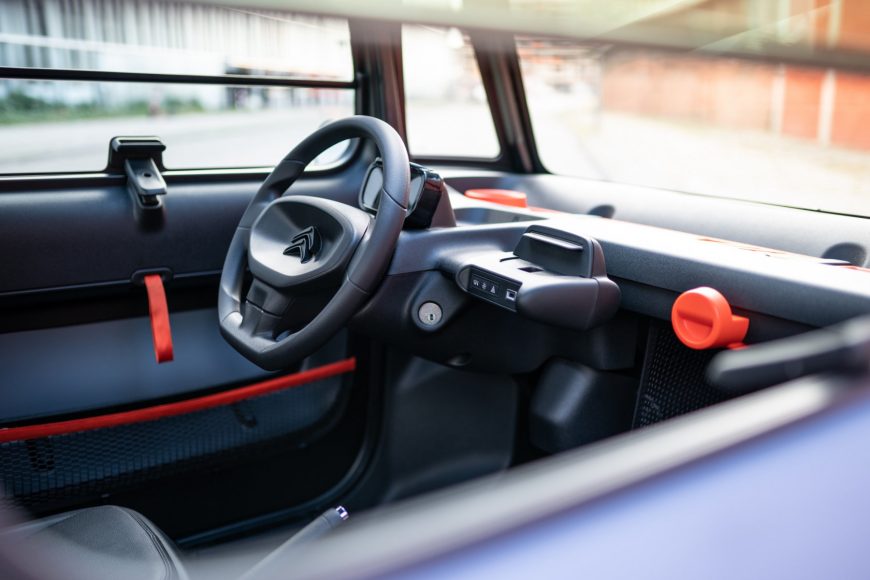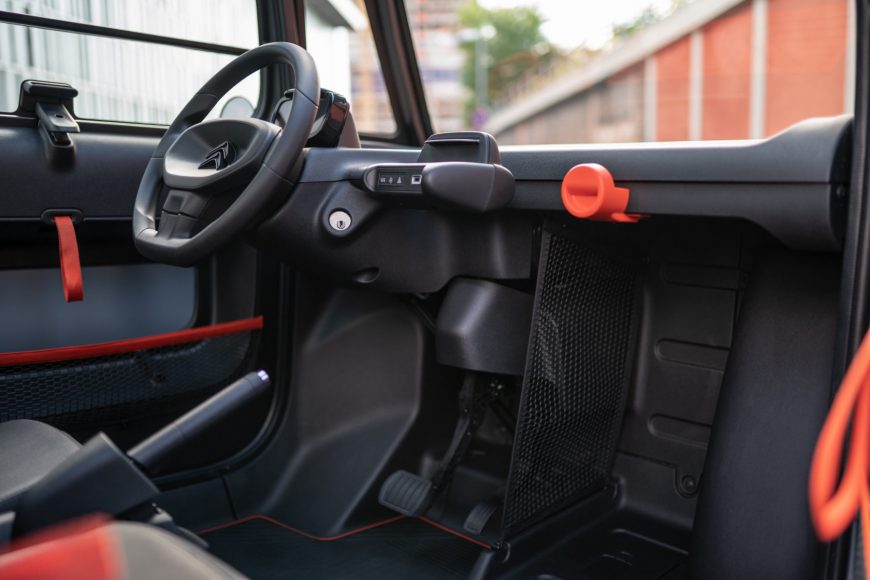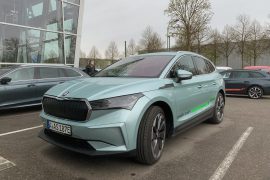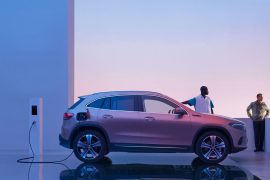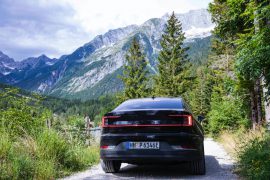Shortly before the lockdown, Citroën invited us to Paris at the end of February for the world premiere of its electric mini-mobile Ami. Now, six months later, we were allowed to try out the city dwarf for the first time in Berlin, which turned out to be a very special experience. And this was not only due to the smart vehicle itself, but also to the reactions that the French friend triggered.
Real eye-catcher
Whether tourists, local drivers or pedalists, many could not help but be amazed when they noticed the miniature version of a “real” car. And quite often, their amazement at this strange vehicle dissolved into a “thumbs up” gesture or a happy smile at the driver. No pitying grins along the lines of “well, haven’t you got any money for a proper car?”, just fascinated looks and enthusiasm. Yet it was precisely the possible reactions of other road users that caused a slight unease in the run-up to the trip. After all, there was the anxious question of whether a vehicle with a maximum “speed” of 45 km/h and a mere 6 kW/8 hp would not mutate into a rolling obstacle that would earn its pilot various curses from Berlin’s motorists. Such concerns were dispelled at the first traffic light when the tiny vehicle – typical Stromer – won a sprint duel, at least for the first few metres, and easily moved along with the flow of traffic until the next intersection. This did not change much during the entire one-hour tour through the city. Sure, at a few moments you wished for a little more horsepower, but in its “natural habitat”, the city, the Yank doesn’t make itself unpopular as an annoying blocker when hopping traffic lights.
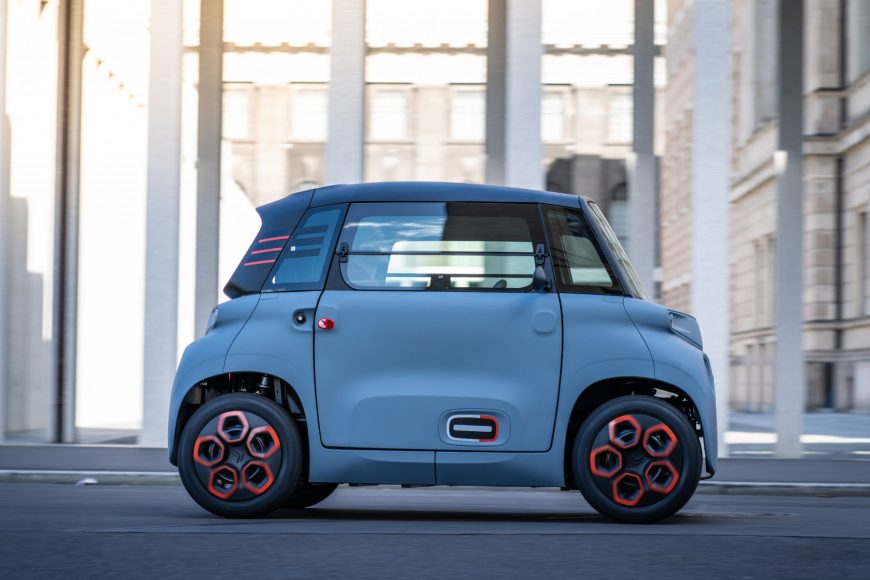
Ami, a non-car
As nice as it is to attract curious glances, even if they are actually only directed at the smart vehicle around you, it is primarily the impression that the Yank leaves on the driver that counts. But before we talk about the mini-mobile itself, it should be explicitly pointed out that the French friend, as its name implies, does not want to be a car, cannot be a car and therefore is not a car. Consequently, this Electric Light Vehicle (LEV) formally belongs to the family of “light four-wheelers for passenger transport” under the classification L6e-BP. However, to compare it to a conventional passenger car simply because two people can sit next to each other in it and it has a roof over their heads does not do justice to this tiny vehicle. As an exclusively urban vehicle, the little Frenchman competes with e-scooters, S-pedelecs or the well-known Renault TWIZY, but it has a lot more to offer. Especially at a sensationally low price. In France, where the Ami can already be ordered, the basic version costs 6000 Euros including VAT. The various leasing options start at 19.99 euros a month and an initial payment of 2600 euros. In Germany, the prices, which have yet to be announced, are to be at a similar level. There are still no public subsidies for e-vehicles in the L6e class; only in Munich can buyers have their LEV vehicle subsidised by the city with 1000 euros. Speaking of buyers: Citroën is aiming its micro-mobile particularly at a young target group. Thanks to the Ami’s classification as a light vehicle, this clientele starts at the age of 16, in some federal states even at 15. The prerequisite is possession of an AM driving licence. Who knows, maybe it will soon be considered cool for this age group in the cities to be on the road in a four-wheeled eye-catcher instead of a scooter. Especially since weather protection and the possibility to talk to fellow passengers are plus points.
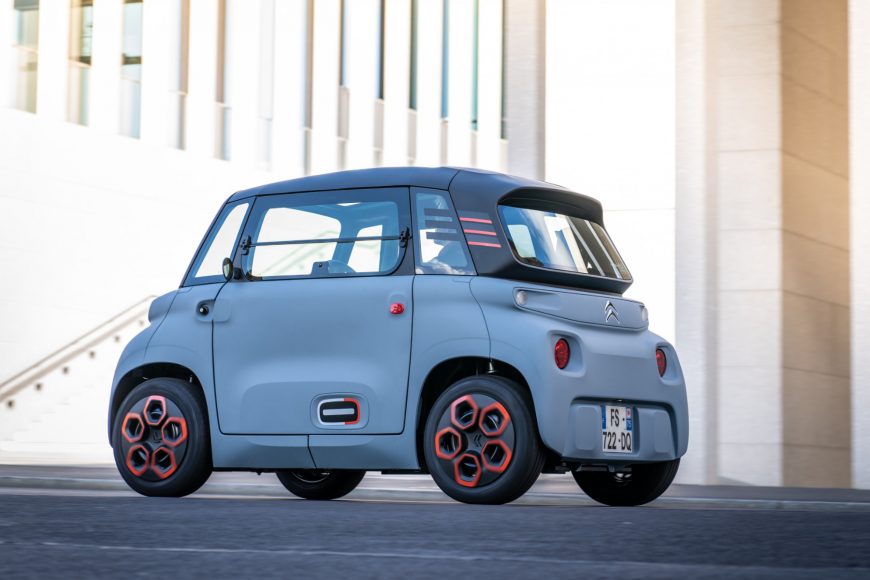
Special feeling
A look inside the rather spartan interior immediately reveals what distinguishes the small car from a car. Driving an AMI means pure mobility, because in order to keep the price as low as possible, almost everything that car drivers are used to in terms of comfort or even some additional gadgets has been dispensed with. This is most obvious in the minimalist seats with integrated plastic neck support, which can be safely classified as “wooden class”. Older people like the author of these lines will not exactly be thrilled by the extremely tight buttocks, but a cushion slid underneath may provide them with a little extra comfort. Also to soften the effects of the equally tight, one could say almost unsprung, chassis. Perhaps the manufacturer will take up this idea and include an AMI-branded cushion in its range of accessories. All joking aside, I got out of the small car after a good hour’s drive – and with a maximum range of 75 kilometres, average journeys are unlikely to be much longer – completely free of pain, but very pleased with the electric city driving. This is due in particular to the vehicle’s manoeuvrability, to which its compact dimensions (length: 2.41 metres, width 1.39 metres) and special 14-inch wheels contribute. Thanks to a turning circle of only 7.20 metres, parking spaces spotted on the other side of the road can be spontaneously approached in one go. This also includes mini-spaces that drivers would not even remotely identify as such, because after all, the Yank can even be parked crossways between two vehicles.
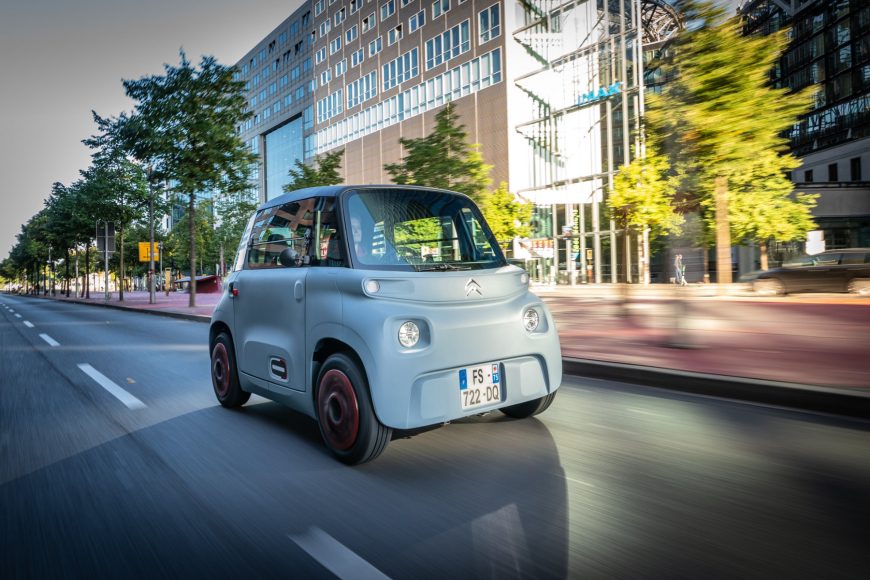
A special, almost panorama-like feeling is conveyed by the large window area consisting of the windscreen and the roof glazing, which extends into the middle of the vehicle and creates a pleasant brightness. The absence of a rear-view mirror in the interior also contributes to the unobstructed view, although opinions differ as to whether this measure was not a little too little of a good thing, especially as the exterior mirrors are extremely small.
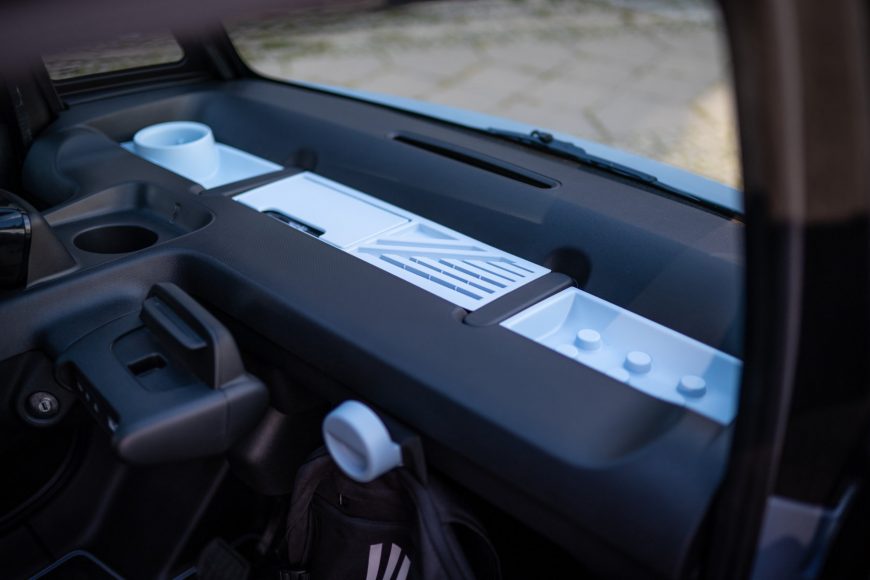
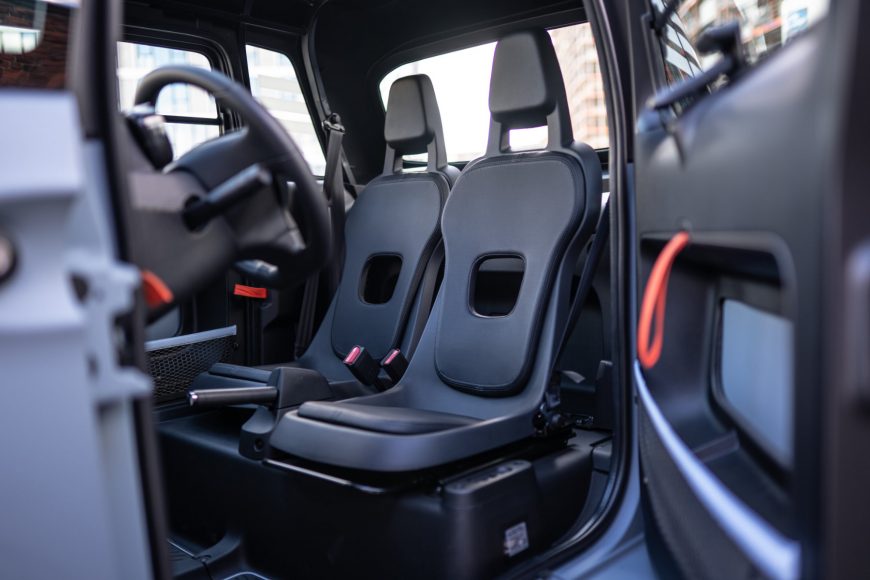
Acceleration from a standstill is sufficiently brisk, although not as brutal as in larger electric vehicles, and the steering can be operated without too much effort despite the lack of power assistance. The brakes, discs at the front and drums at the rear, are adequate for the low speed and mass (471 kg) of the vehicle and do not bite excessively. The Ami can be fully charged in three hours at any conventional household socket. There will be a special adapter for the wallbox, but this will not shorten the charging time.
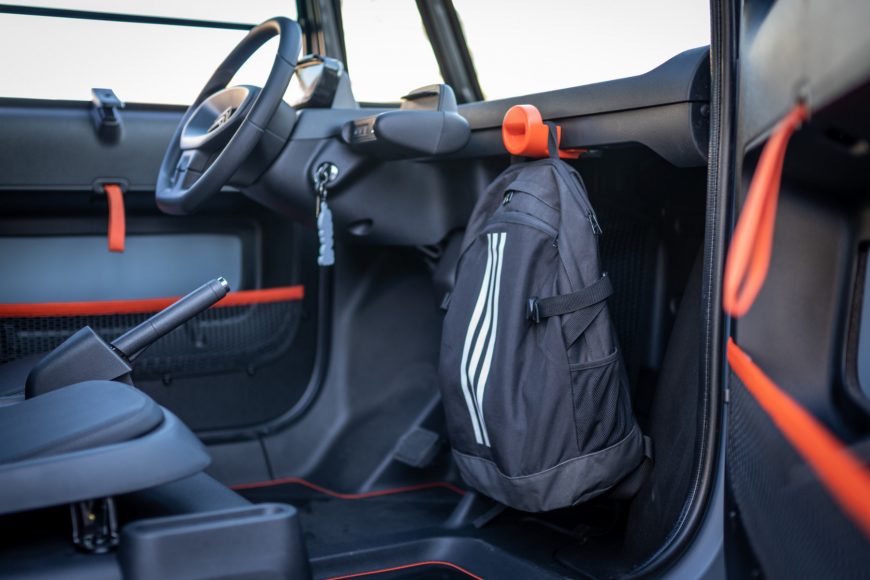
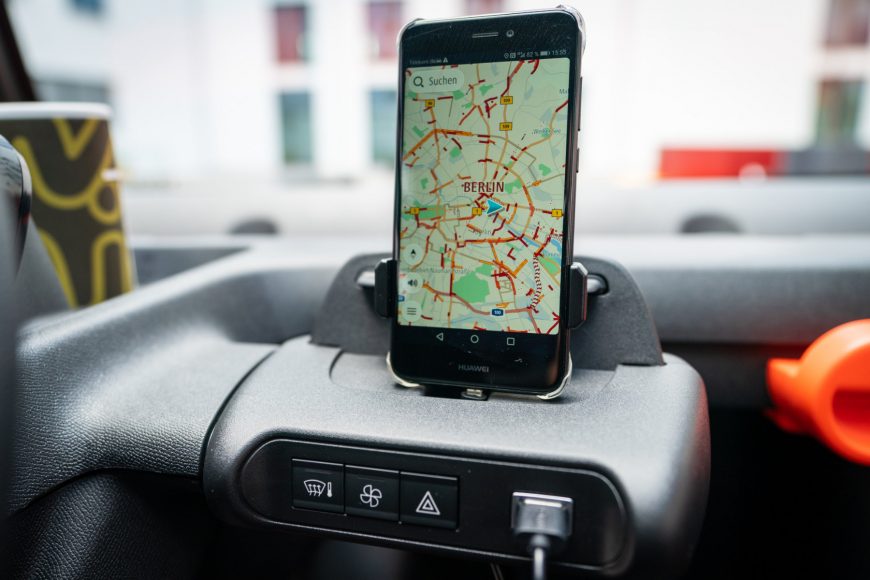
Simple materials and smart details
Not only the interior is dominated by parts made of hard plastic, but also the body is made of this material – coloured in light blue-grey. For reasons of cost efficiency, it is absolutely understandable that Citroën has deliberately dispensed with higher-quality materials and opted for a purist but practical interior. However, those who want to individualise their little Freud have access to a whole range of accessories, right up to the roof spoiler (!) at the rear.
The hinges for closing the doors from the inside are unusual and practical. Another clever idea is the reminiscence of the iconic “duck” in the form of the lower sections of the side windows that fold outwards.
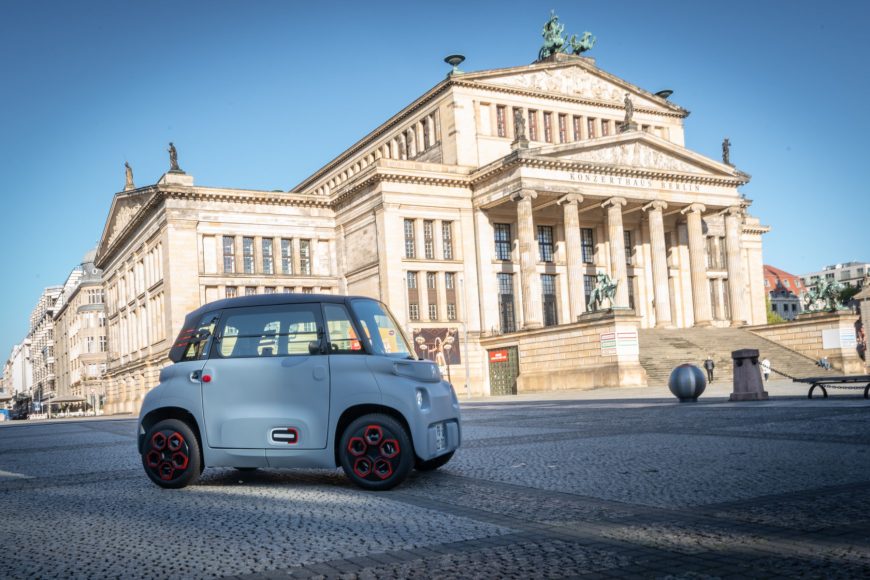
Amazing: the tiny car is made up of just about 250 parts, many of which are identical. The front and rear are almost identical, so that at first glance the question arises as to where the front is and where the rear is on the Yank. Also unusual: the door on the driver’s side is hinged at the back and thus opens to the front, the passenger door opens to the rear as usual. Due to the inevitable lack of a luggage compartment, Citroën’s developers were forced to create smaller storage spaces and shelves in several places. This was achieved, for example, by placing the passenger seat relatively far back and fixing it firmly. In this way, it was possible to create space in the left-hand area of the footwell. Optionally, this small compartment can be delimited with a net. There are also areas behind the seats for storing small utensils. In addition, the designers have created relatively large compartments in the doors.
Conclusion
In the past, almost all major car manufacturers have repeatedly presented concept studies of small electric vehicles for urban use at various trade fairs. But for the most part that was all. Now Citroën has recognised the (climate) signs of the times and is offering the Ami, an interesting series-production vehicle that is specially tailored to the mobility needs of younger city dwellers. Anyone who does not apply the usual car standards when assessing the little Frenchman will be enthusiastic about the Ami, not least because of the excellent price-performance ratio and the sensational design. The time seems ripe for innovative, environmentally friendly mobility offers and so it is to be hoped that the French friend will soon help shape the streetscape of inner cities.
Suitability for the hospitality and tourism industry
If you run a city hotel or hostel for young guests and want to lend them a special, easy-to-use mobile for exploring the city or make it available free of charge, the Ami is the perfect choice. In addition, the little Frenchman is a real eye-catcher due to its unusual appearance and thus predestined as a mobile advertising medium and symbol of the sustainability claim of a hospitality business.
Every petrol-engined vehicle towing a caravan and every motorhome that leaves a camping or glamping site and returns later because its driver is only going on a small errand or sightseeing tour in the nearest municipality causes exhaust and noise emissions in the immediate vicinity of other campers. So what could be more obvious than to offer alternative forms of mobility that make at least part of these trips locally emission-free? For example, by making “Amis” available to their guests. The plural chosen here is quite deliberate in view of the low procurement and maintenance costs.
Text: Peter Grett
Pictures: Citroen

